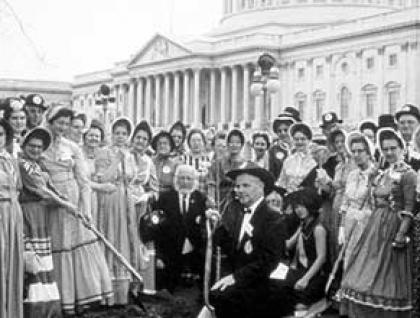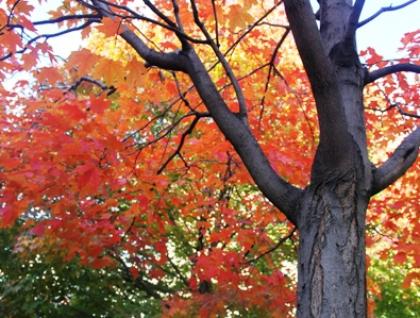
A visit to Nebraska today wouldn’t disclose that the state was once a treeless plain. Yet it was the lack of trees there that led to the founding of Arbor Day in the 1800s. Among the pioneers moving to Nebraska Territory was J. Sterling Morton. He and his wife were lovers of nature, and the home they established in Nebraska was quickly planted with trees, shrubs, and flowers. Morton was a journalist and soon became editor of Nebraska’s first newspaper. Given that forum, he spread agricultural information and his enthusiasm for trees to an equally enthusiastic audience. His fellow pioneers missed their trees. But, more importantly, trees were needed as windbreaks and to keep soil in place, for fuel and building materials, and for shade from the hot sun. Morton not only advocated tree planting by individuals in his articles and editorials, but he also encouraged civic organizations and groups to join in. His prominence in the area increased, and he became secretary of the Nebraska Territory.
On January 4, 1872, Morton first proposed a tree-planting holiday to be called “Arbor Day” to the Nebraska Board of Agriculture. The date was set for April 10, 1872. Prizes were offered to counties and individuals for properly planting the largest number of trees on that day. It was estimated that more than one million trees were planted in Nebraska on the first Arbor Day. Arbor Day was celebrated annually, and in 1885 was named a legal holiday in Nebraska. April 22, Morton’s birthday, was selected as the date for its permanent observance. In April 1855, Nebraska City celebrated Arbor Day with a grand parade and a speech by J. Sterling Morton. As part of their celebration, students from around the city met at their respective school rooms in the morning for the purpose of planting at least one tree. Each tree that was planted was labeled with the grade, the time planted, and was cared for by that grade. During the 1870s, other states passed legislation to observe Arbor Day, and a tree planting tradition began in schools nationwide in 1882. The most common date for the state observances is the last Friday in April, and several U.S. presidents have proclaimed a national Arbor Day on that date. However, a number of state Arbor Days are at other times to coincide with the best tree planting weather, from January and February in the south to May in the far north.

New York State celebrates Arbor Day annually on the last Friday in April. New York State-owned forests in New York are certified by the Forest Stewardship Council (FSC) as meeting internationally recognized criteria for sustainability and multiple benefits such as clean water, air purification, wildlife habitat, recreation, carbon sequestration, visual aesthetics, and economic value.
Some content on this page is saved in PDF format. To view these files, download Adobe Acrobat Reader free. If you are having trouble reading a document, request an accessible copy of the PDF or Word Document.
